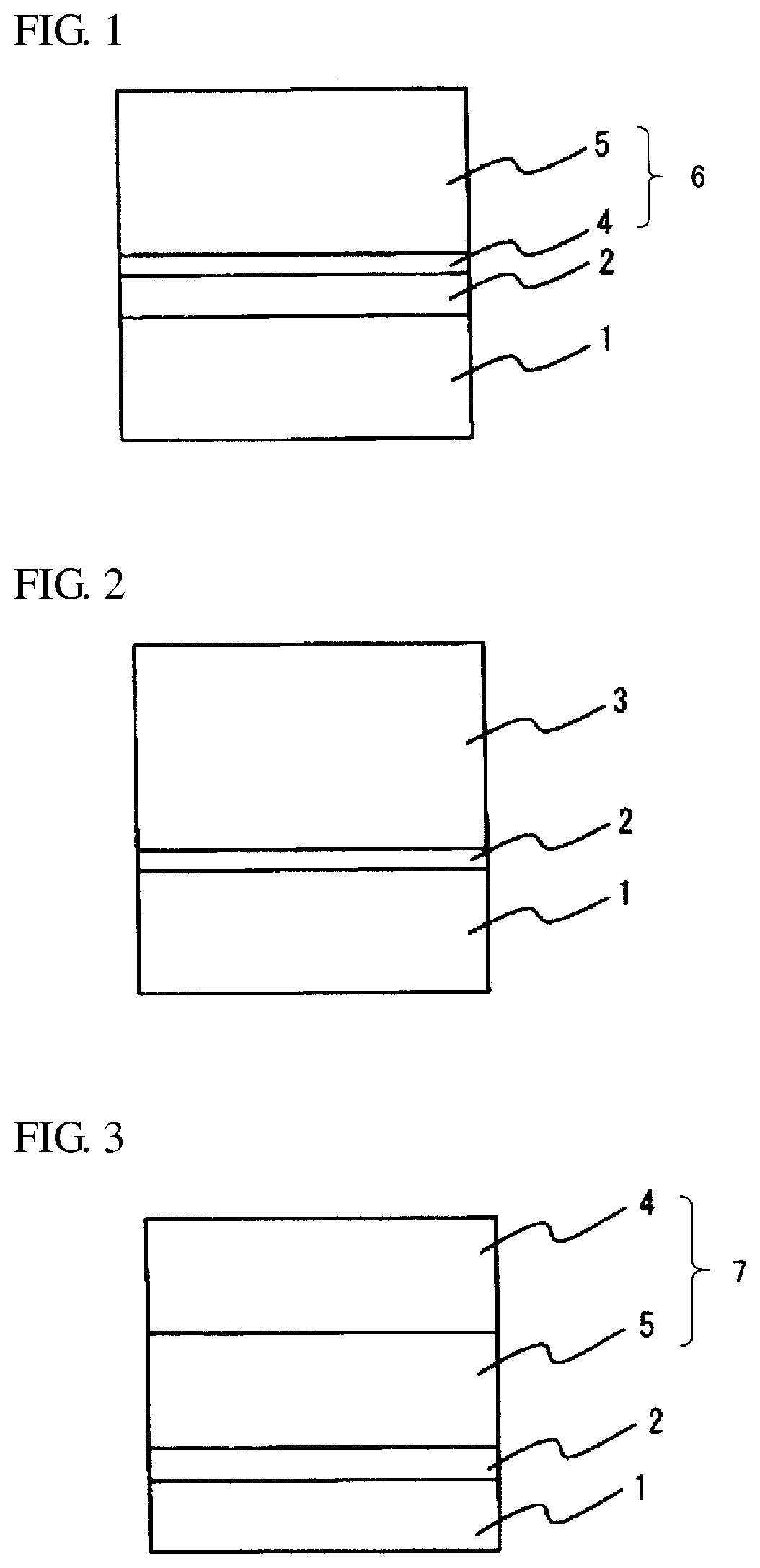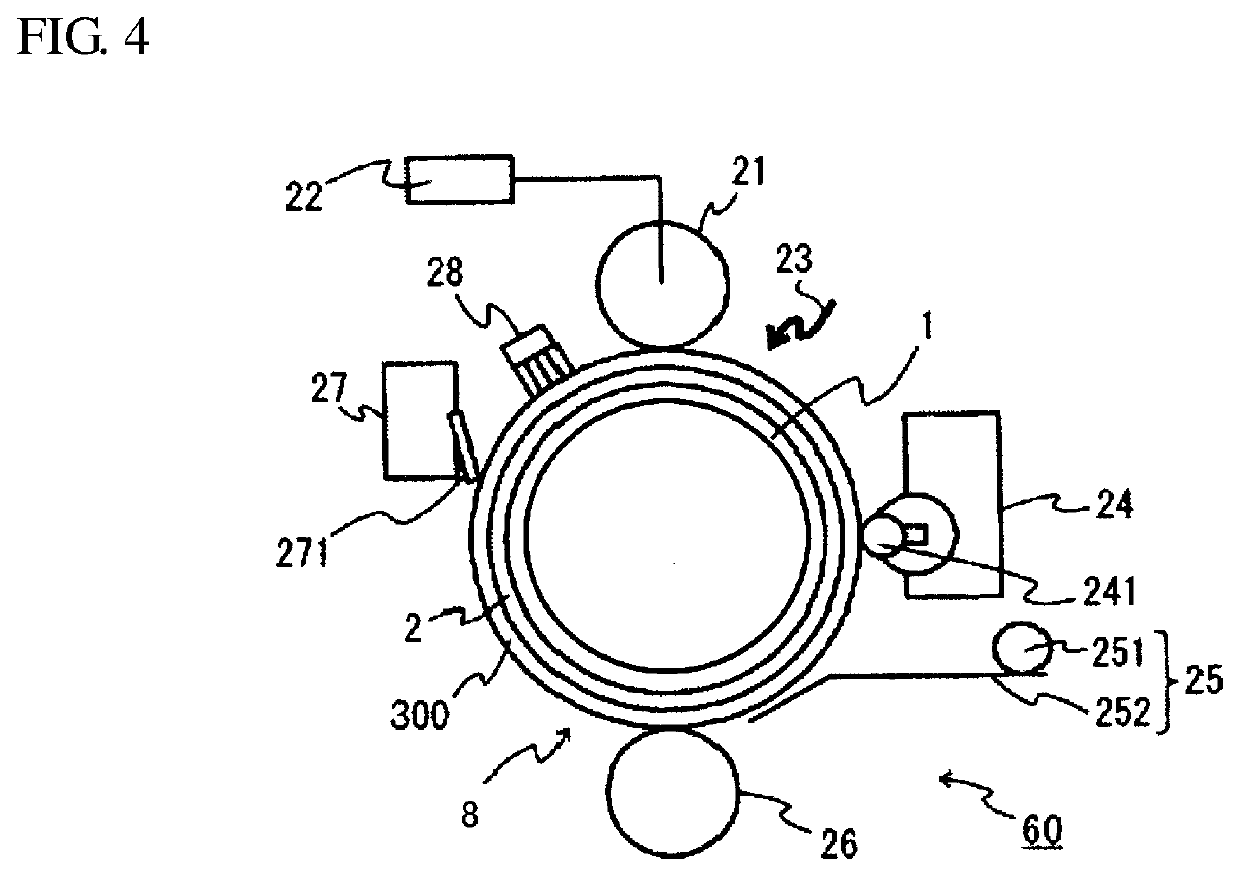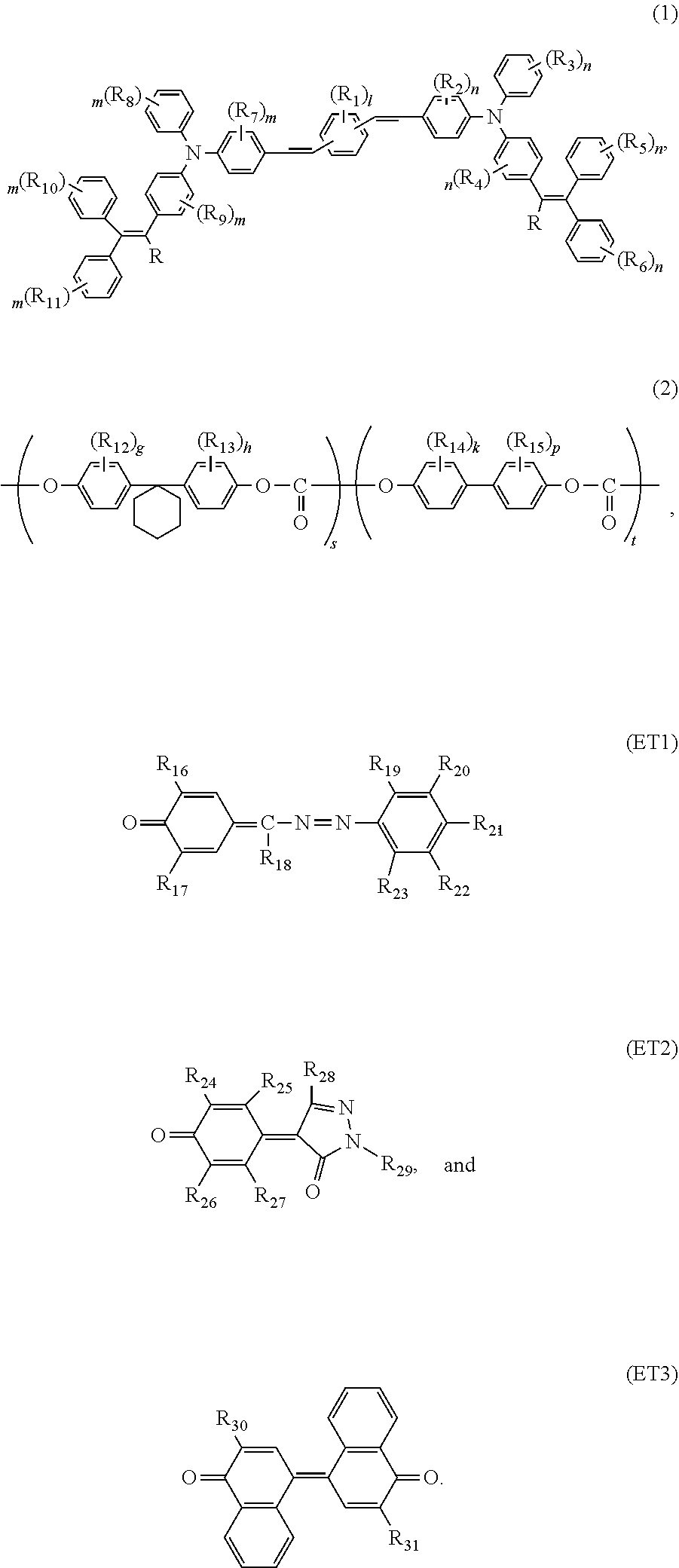Electrophotographic photoconductor, method of manufacturing the same, and electrophotographic apparatus
a photoconductor and electrophotography technology, applied in the field of electrophotography, can solve the problems of shortening the lifetime of the photoconductor, changing the potential and the sensitivity, and image deficiencies, and achieves low residual potential, good wear resistance and contamination resistance, and high sensitivity.
- Summary
- Abstract
- Description
- Claims
- Application Information
AI Technical Summary
Benefits of technology
Problems solved by technology
Method used
Image
Examples
example 1
[0083]In 90 parts by mass of methanol, 5 parts by mass of alcohol-soluble nylon (Toray, product name “CM8000”) and 5 parts by mass of aminosilane-treated titanium oxide microparticles were dissolved and dispersed to prepare a coating liquid for undercoat layer. The coating liquid for undercoat layer was dip coated on the outer periphery of an aluminum cylinder with an outer diameter of 30 mm as a conductive substrate 1 and then dried at 100° C. for 30 minutes to form an undercoat layer 2 with a thickness of 3 μm.
[0084]In 60 parts by mass of dichloromethane, 1 part by mass of Y-titanyl phthalocyanine as a charge generation material and 1.5 parts by mass of polyvinyl butyral resin (Sekisui Chemical, product name “ESLEC KS-1”) as a binder resin were dissolved and dispersed to prepare a coating liquid for charge generation layer. The coating liquid for charge generation layer was dip coated on the undercoat layer 2 and then dried at 80° C. for 30 minutes to form a charge generation laye...
example 23
[0107]A coating liquid for forming an undercoat layer, which was prepared by dissolving 0.2 parts by mass of vinyl chloride-vinyl acetate-vinyl alcohol terpolymer (Nissin Chemical Industry, product name “Solbin TA5R”) in 99 parts by mass of methyl ethyl ketone while stirring, was dip coated on the outer periphery of an aluminum cylinder with an outer diameter of 24 mm as a conductive substrate 1 and then dried at 100° C. for 30 minutes to form an undercoat layer 2 with a thickness of 0.1μm.
[0108]Next, 1.5 parts by mass (about 1.2 parts by mass with respect to 100 parts by mass of a binder resin) of metal-free phthalocyanine as a charge generation material represented by the following formula:
45 parts by mass (about 34.6 parts by mass with respect to 100 parts by mass of a binder resin) of a compound represented by the above structural formula (1-5) as a hole transport material, 35 parts by mass (about 26.9 parts by mass with respect to 100 parts by mass of a binder resin) of a compo...
example 34
[0118]Next, 50 parts by mass of a compound as a hole transport material represented by the following formula:
and 50 parts by mass of bisphenol Z polycarbonate as a binder resin were dissolved in 800 parts by mass of dichloromethane to prepare a coating liquid for charge transport layer. The coating liquid for charge transport layer was dip coated on the outer periphery of an aluminum cylinder with an outer diameter of 24 mm as a conductive substrate 1 and then dried at 120° C. for 60 minutes to form a charge transport layer with a thickness of 15 μm.
[0119]Next, 1.5 parts by mass (about 2.5 parts by mass with respect to 100 parts by mass of a binder resin) of metal-free phthalocyanine as a charge generation material represented by the following formula:
10 parts by mass (about 17 parts by mass with respect to 100 parts by mass of a binder resin) of a compound represented by the above structural formula (1-5) as a hole transport material, 27.5 parts by mass (about 45.8 parts by mass wi...
PUM
| Property | Measurement | Unit |
|---|---|---|
| hole mobility | aaaaa | aaaaa |
| diameter | aaaaa | aaaaa |
| thickness | aaaaa | aaaaa |
Abstract
Description
Claims
Application Information
 Login to View More
Login to View More - R&D
- Intellectual Property
- Life Sciences
- Materials
- Tech Scout
- Unparalleled Data Quality
- Higher Quality Content
- 60% Fewer Hallucinations
Browse by: Latest US Patents, China's latest patents, Technical Efficacy Thesaurus, Application Domain, Technology Topic, Popular Technical Reports.
© 2025 PatSnap. All rights reserved.Legal|Privacy policy|Modern Slavery Act Transparency Statement|Sitemap|About US| Contact US: help@patsnap.com



